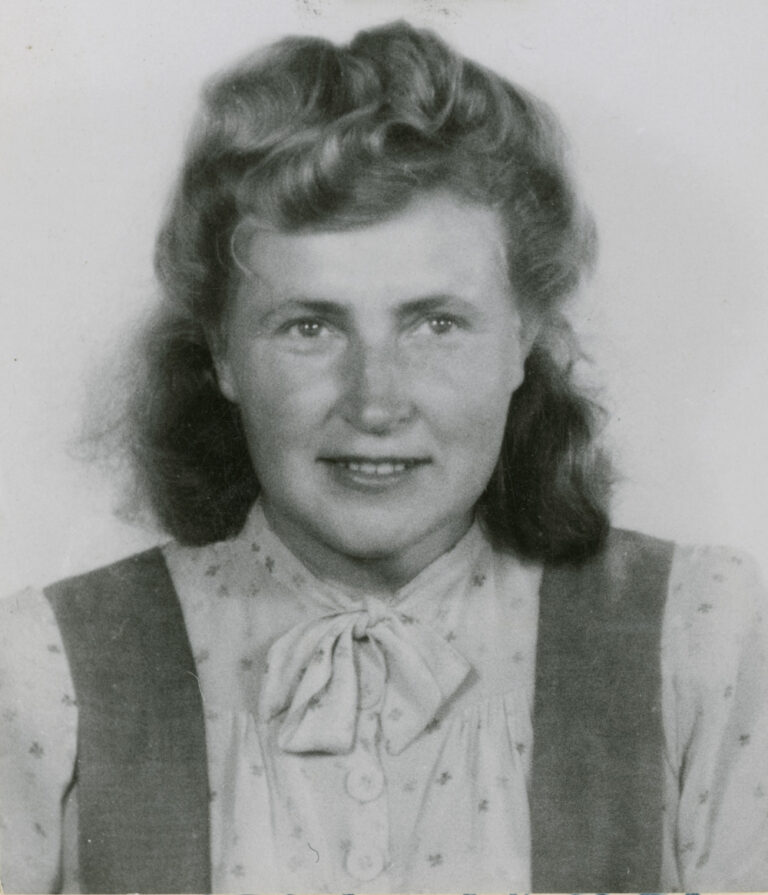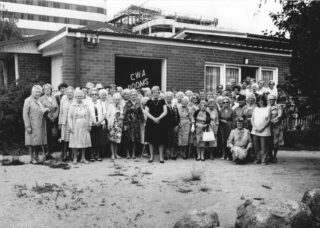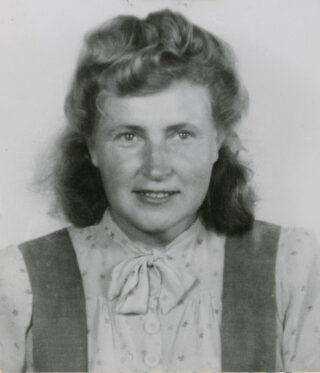- Entry type: Person
- Entry ID: AWE4860
Koobakene, Salme
- Maiden name Kärema, Salme

- Born 5 September 1919, , Valgamaa, Estonia
- Died 4 October 1998, Canberra, Australian Capital Territory, Australia
- Occupation Library Assistant, Philanthropist, Refugee
Summary
Salme Koobakene was born in rural Estonia and undertook tertiary studies at the University of Tartu. It is likely that the second Soviet invasion of her homeland ended the possibility of her graduating, when she joined tens of thousands fleeing. She reached what became the American zone of Germany and was selected by the Australia Government to be in the first party of refugees to be resettled from Germany. The bulk of her working life was spent at the Menzies Library of the Australian National University. In her estate, she left an endowment to the National Gallery of Australia and another to the Country Women’s Association for annual grants to high school students and young carers in the Canberra-Monaro region.
Details
Salme Koobakene was born Salme Kärema in Valga, a county on Estonia’s southern border with Latvia. Her mother was a midwife and her father, Ado, a farmer. She was born into the newly independent nation of Estonia, at a time when the Estonian people realised the value of education for their girls as well as boys. She completed her secondary education at the Valga Russian Co-educational High School and began to study for an Arts degree at the University of Tartu.
The Soviet Union invaded the Republic of Estonia in June 1940 and a year later, around 10,000 Estonians identified as ‘anti-Soviet elements’ were deported to Siberia. These people included politicians, as well as those involved in maintaining the state’s legal apparatus. Salme Koobakene’s husband seems to have fitted into the last category as it is understood that he was a senior prison official.
The German Army arrived in Estonia only one week after the deportations, heralding a period of comparative peace. It was during this period that Salme resumed her studies at the University of Tartu, in the late summer of 1943. By September 1944, the German front reached the Estonian capital of Tallinn and at this time an estimated 70,000 to 80,000 Estonians fled by whatever means were available. At the end of the war, Salme found herself in a camp for displaced persons which had been set up in Hanau in the United States zone of Germany. There she would have heard a call on behalf of a visiting Australian selection team by the United Nations Relief and Rehabilitation Administration which operated the camps.
Her widowed status, age, education and other skills led to Salme being accepted by the selection team. She travelled to the Diepholz Camp in the British zone near Bremerhaven to join others before for their ship journey to Australia. This shipload of refugees was the first group of migrants of non-British origin to be selected by the Australian Government. Their ship was the USAT General Stuart Heintzelman, built as a troop transport for the US Army, so it was operated by the Army while crewed by the US Navy. Even though the four-week voyage was more like a holiday after more than seven years of war, there was military discipline on board. All of the passengers were expected to undertake some work like translating the daily newsletter into their mother tongues and staffing the ship’s library. In addition to reading, recreation focussed on music making, chess and nightly films and dances.
The voyage ended with the disembarkation of the Heintzelman‘s passengers at Fremantle on 28 November 1947. After four nights in Army camps in Perth, they boarded the Kanimbla, still under the control of the Australian Navy. They arrived at Port Melbourne on 7 December 1947 and disembarked the next day. By 9 December they were settling into another camp routine, this time at the Bonegilla Migrant Reception and Training Centre, near Wodonga on the Murray River.
The Bonegilla records show that Salme worked as a waitress in the camp from 15 December until 21 January the next year. However, the record of her receipt of an Aliens Registration Certificate on 13 January 1948 shows her as located at Gorman House, a government hostel for public servants, in Canberra.
By mid-1950 she was enrolled to study the Russian language at the Canberra University College. In 1954, she passed both Russian II and Russian III with honours, as well as German I. Her proven skills in the Russian language led to her appointment to the Australian National University as a Library Assistant in 1961. She continued to work at the Menzies Library, which held materials used by the Research Schools of the University, until her retirement, using her Russian language skills to translate material for the Library.
Salme died on 4 October 1998. She had been a good saver, and had been able to live well in retirement. There was enough money in her estate to benefit the National Gallery of Australia to the amount of at least $10,000 per year between 2001-02 and 2007-08. In addition, she willed funds to the Country Women’s Association to provide scholarships for secondary students in the Canberra and Monaro regions. At some stage early on in her Canberra life, she found that the Country Women’s Association enabled her to meet Australians of a similar age with similar interests. The Canberra Branch of the CWA uses its half of the income from the bequest to award grants to Year 12 students and young carers in Canberra, and the Monaro Group uses its half to provide scholarships along similar lines. The high regard in which Estonians held education lives on in the legacy of Salme Koobakene.
Archival resources
- Australian National University Archives
-
National Archives of Australia, National Office, Canberra
- Correspondence files, class 6 (aliens registration)
- Aliens registration certificates - Displaced persons located in Canberra - ex GENERAL HEINTZELMAN
- Personal Statement and Declaration by alien passengers entering Australia (Forms A42)
- Migrant Selection Documents for Displaced Persons who travelled to Australia per General Stuart Heintzelman departing Bremerhaven 30 October 1947
- Estonian Archives in Australia (EAA)
- National Archives of Australia, Various Locations
Digital resources
Published resources
-
Resource Section
- The Red Army invasion of Estonia in 1944, http://www.estonica.org/en/History/1939-1945_Estonia_and_World_War_II/The_Red_Army_invasion_of_Estonia_in_1944/
- Estonia in World War II, 2012, http://en.wikipedia.org/wiki/Estonia_in_World_War_II
- Soviet deportations from Estonia, http://en.wikipedia.org/wiki/Soviet_deportations_from_Estonia
- United Nations Relief and Rehabilitation Administration, 2012, http://en.wikipedia.org/wiki/United_Nations_Relief_and_Rehabilitation_Administration
- Edited Book
-
Newspaper Article
- Eestlasi vōōrsil, 1950, http://nla.gov.au/nla.news-page7746633
- University College Examinations, 1954, http://nla.gov.au/nla.news-article2904936
- Jindabyne, 2011
- Book
-
Site Exhibition
- From Lady Denman to Katy Gallagher: A Century of Women's Contributions to Canberra, Australian Women's Archives Project, 2013, http://www.womenaustralia.info/exhib/ldkg
-
Resource
- Trove: Koobakene, Salme (19190905-19981004), http://nla.gov.au/nla.party-1598758

